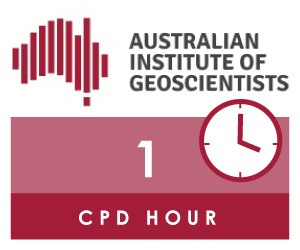| |
 Two talks for Adelaide members and colleagues, presented by Graham Teale and Colin Conor, arranged by AIG South Australia Branch.
Two talks for Adelaide members and colleagues, presented by Graham Teale and Colin Conor, arranged by AIG South Australia Branch.
This will also double as our Christmas show. As usual we will have drinks from 6.30 to 7pm and our speaker will talk from 7pm to 8pm with dinner starting at 8pm.
For those wishing to stay and have dinner can you please contact Adrian Brewer prior to Monday 16th so we can let the venue know numbers.
Graham Teale is well known to most South Australian members.
Colin Conor graduated from Leicester University and came out to South Australia in 1969 working with the then Department of Mines and Energy. Colin then worked on numerous projects for the department before heading off to work at Olympic Dam, the Agnew Nickel Mine, the National Petroleum Centre and then went into contracting and consulting for a number of groups. From 1996 Colin worked with MESA/PIRSA and although working on many projects did concentrate on the Curnamona and the eastern Gawler Craton.
A short abstract of Colin’s talk follows.
“The rift accommodating the Willyama Supergroup represents the southern known extent of the Palaeoproterozoic eastern Australia lead-zinc belt. Only a small part remains in the Curnamona Province but this includes a portion of both the western shoulder and the main rift, the latter hosting the Broken Hill lodes, what comprised perhaps the world’s largest accumulation of silver-lead-zinc. Mineralisation coincided with a magmatic event manifested by partial melting of the upper crust and introduction of mafic magma as sills essentially coeval with sedimentation.
The western rift flank is preserved in Olary region of South Australia and contains high temperature felsic and mafic volcanics and sedimentary units of the Willyama Supergroup significantly older than the sediments of the Broken Hill Domain of NSW. Resulting from the Broken Hill Exploration Initiative (BHEI) it has been shown that much of the sedimentation is unconformity bounded, this contrasts with the Broken Hill region where sedimentation appears to have been continuous. In spite of the depositional difference chemical sediments (i.e. exhalites or inhalites) are present in both regions indicating a common evolutionary pattern, moreover these chemical sediments have long been shown to be significant in their relationship to mineralisation. To date the endowment of silver-lead-zinc mineralisation in the Olary region remains far below that of the Broken Hill domain, however evidence from the older rocks in South Australia shows that the mineral system was developing across this region of crustal attenuation well before it climaxed at Broken Hill.”